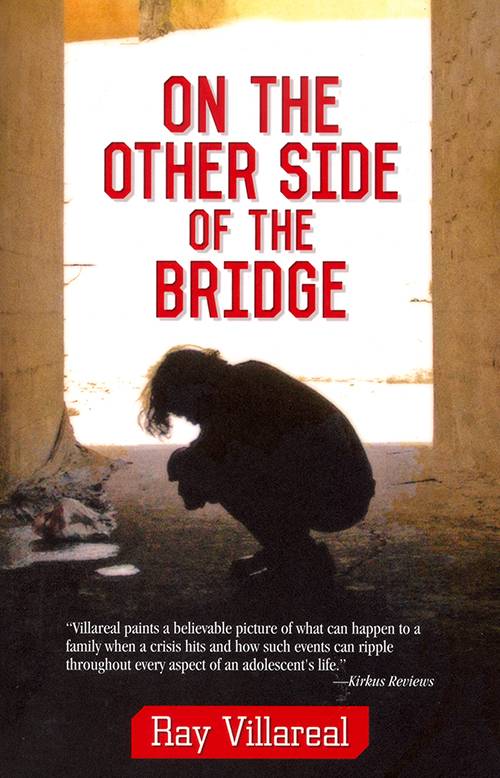The Catcher In The Creosote

On the Other Side of the Bridge
By Ray Villareal
Houston: Arte Público Press, 2014
227 pp. $11.95 paper
Reviewed by
Christian Wright
Boys will be boys. They skip church, put off school work, and occasionally vandalize public property. Teenager Lonnie Rodriguez, does all of these in Ray Villareal’s On the Other Side of the Bridge. Villareal captures the torment of adolescent life and pressures of a young man in this coming-of-age novel. As an author of five novels dealing with similar angsts of youth including Body Slammed and Don’t Call Me a Hero, Villareal masters what could possibly erupt when catastrophe strikes a family—in Lonnie’s case, the death of his mother. Overall, Villareal argues that through hard work and hope, nearly any obstacle can be overcome.
Villareal paints a lifelike picture of imminent struggles of a teenage boy from Marsville, Texas; a fictitious town along Interstate 27. This fast-paced novel allows readers to engross Lonnie’s mischievous activities before his mother is murdered. Villareal’s first sixty eight pages detail events of mayhem, crime, and lack of prioritization any teenager might experience. Though some readers may argue this hinders plot development, Villareal successfully captures the mischief and innocence of childhood.
Lonnie is thrust into adulthood when his mother is brutally murdered. Villareal’s novel shows how extreme situations yield extreme repercussions. Left with a drunk and unemployed father, Lonnie faces the intense pressures of household responsibilities, traumas of losing his mother, and school. Overall, Villareal’s best attribute to the novel comes through his ability of alternating between humor, hate, passion, and discipline. The dramatic shifts in mood easily account for the book’s entertaining read.
Initially displaying an adolescent boy who skips church and “wreaks havoc” on his town with friends, On the Other Side of the Bridge does well in creating a setting capable of consuming its protagonist and spitting him out.
Facing the world shapes Lonnie as he gains respect and appreciation for things he once took for granted. His grades fall and the money runs out leaving Lonnie and his father homeless. They have become Lonnie’s own example of helpless as he relates to the homeless community living on the other side of the bridge. The two face the hardest times they have known. Lonnie gains some hope after finding work raking leaves and entering a homeless shelter with his father. Soon Lonnie finds his inner strength.
After harsh trials in life, father and son find stability in the world and prepare for the road ahead. Altogether, Villareal’s young adult novel sheds light on serious themes prevalent in almost all Texas cities—death, homelessness, and addiction. This fast-paced and authentic book does not just touch these themes, it lives them. Villareal details a young man’s life and offers several views and struggles readers can take with them and learn from. Young adult males will find that Villareal has created something worth their time simply because it’s what boys like to read about—being a boy. Open this book and experience them for yourself.
